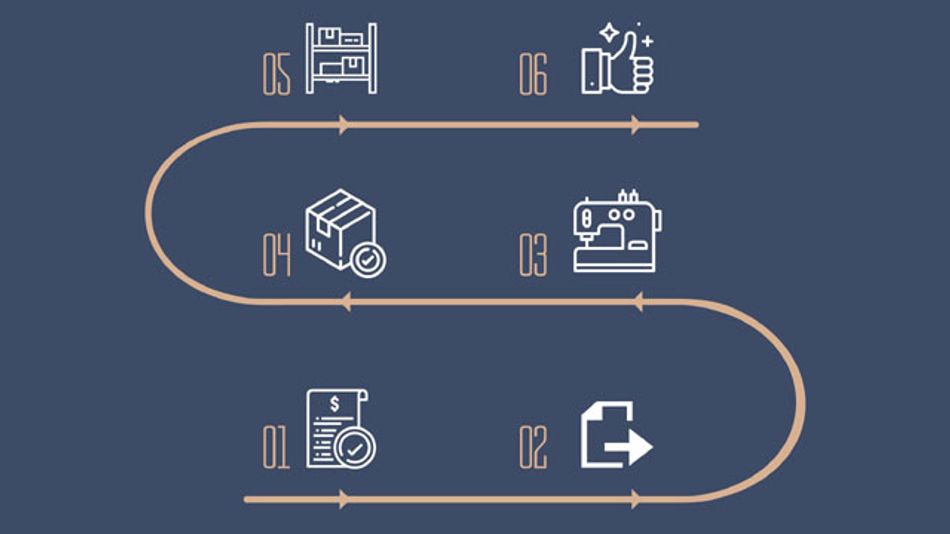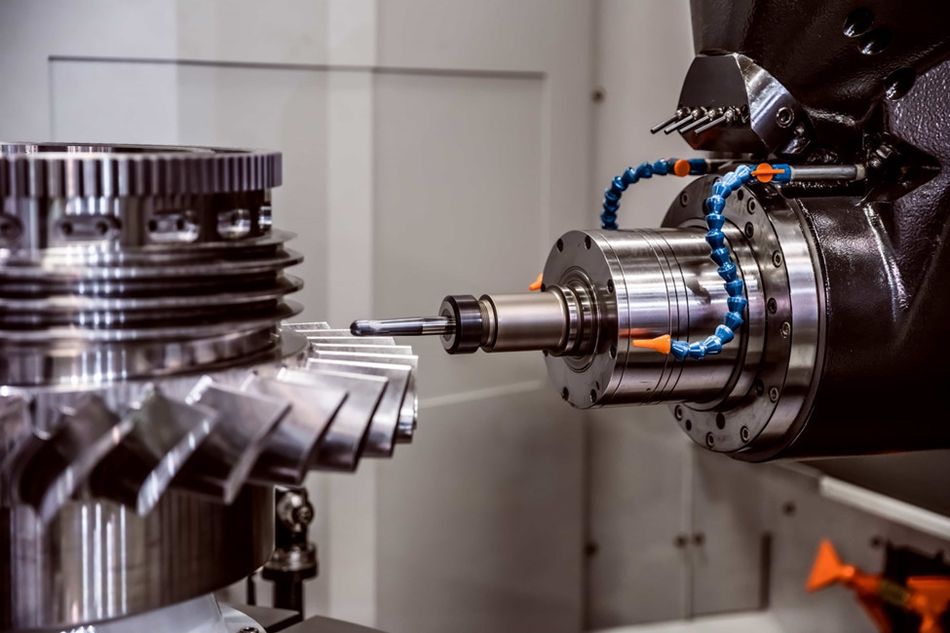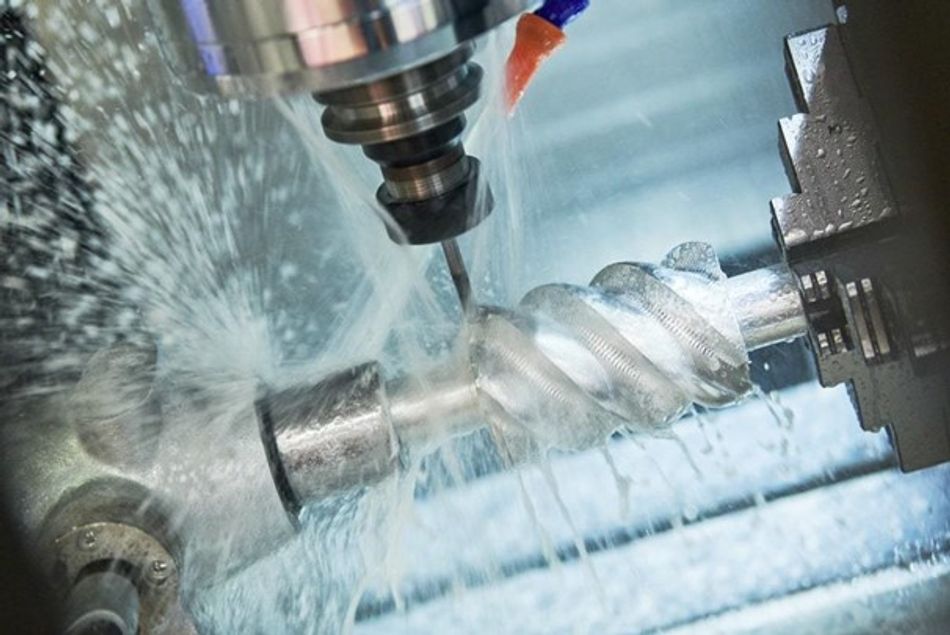What Is On-demand Manufacturing? Accelerating Innovation and Time-to-Market
The manufacturing industry has always had specific processes and requirements. It has always meant larger volume orders, traditional factories, and intricate assembly lines. However, a fairly recent concept of on-demand manufacturing is changing the industry for the better.
This article was first published on
www.rapiddirect.comThe manufacturing industry has always had specific processes and requirements. It has always meant larger volume orders, traditional factories, and intricate assembly lines. However, a fairly recent concept of on-demand manufacturing is changing the industry for the better.
In its essence, on-demand manufacturing is exactly what the name sounds like. It’s the concept that limits the manufacturing of parts to only when they are required.
This means no excess inventory and no exuberant costs through the use of automation and predictive modeling. However, that’s not all. There are a lot of benefits and drawbacks associated with on-demand manufacturing and the following text will take a brief look at them.
A Brief Introduction to On-Demand Manufacturing
As stated before, the concept of manufacturing on-demand is exactly what its name suggests. It’s the manufacturing of parts or products when needed and in the quantity required.

In many ways, the process is very similar to Lean’s just-in-time concept. However, its augmented by automation and AI to predict when something will be needed. The process also considers the prerequisites needed to maintain peak efficiency in the manufacturing facility and consistently deliver value.
Generally, on-demand manufacturing differs greatly from traditional manufacturing as it focuses on low-volume custom parts on the customer’s demand. On the other hand, traditional manufacturing creates the part or product in large quantities beforehand by anticipating customer demand.
The concept of on-demand production has garnered a lot of attention in the manufacturing sector and for good reason. The advantages of manufacturing on-demand are numerous. Some of them are faster delivery times, significant cost savings, enhanced flexibility, and waste reduction.
The process is also an excellent counter to supply chain challenges that the manufacturing industry faces. Increased flexibility facilitates shorter lead times and lower inventory costs, helping businesses stay ahead of demand. Thereby offering better, faster production at a reasonable cost.
The Key Drivers Behind the Rise of On-Demand Manufacturing
The concept behind on-demand manufacturing sounds simple, so why is it that it’s revered as something recent or novel? The answer is in the timing. Relying on an on-demand model for high-demand manufacturing products was not at all feasible.
The available technology, communication barriers, and supply chain intricacies prevented businesses from leveraging it for their growth. Moreover, the population, in general, wasn’t aware of environmental challenges, and the demand for sustainable practices was severely limited to some areas.
However, things changed recently. Now, on-demand production is not only feasible but also recommended for the growth of any business. There are several factors behind this phenomenon, but the following reasons are the most important:

1 – Advances in Available Technology
This is perhaps the most important factor that has been nothing but a game-changer for the industry. Recent advancements in cloud computing, automation, and manufacturing techniques themselves have redefined what’s possible.
Take 3D printing as an example. A technology once considered impractical for the manufacturing industry is now at the helm of it. From prototyping to production, 3D printing is used everywhere and continues to advance every single day.
Similarly, the digital manufacturing process and Industry 4.0 combined have also played a huge role in both decentralizing manufacturing and enhancing the overall experience.
From designing innovative products to analyzing possible variants, and even optimizing the said design for manufacturability, current technological advancements simplify it all.
2 – Growing Customer Demands
Another factor behind the exponential growth of on-demand manufacturing is the maturity of customers. Modern customers require more customized options with greater production flexibility, which is next to impossible in any traditional setup.
Furthermore, modern customers also need more tailored solutions for their specific applications because of the growing efficiency requirement. Any B2B customer would try to focus more on a product feature that enhances their specific application, making it a requirement for more specialized solutions according to the client’s design.
3 – The Requirement to Curb Costs
The increased competition in the market means that all businesses, including manufacturers, are under immense pressure to improve their bottom lines. The best way to do so is to ensure efficient production while implementing novel methods to reduce costs. The process may sound simple but it’s not as focusing too much on cost can compromise quality and that is something no manufacturer will ever accept.
The concept of on-demand manufacturing can address the cost problem for small batches without any compromise on quality. It simplifies production and curbs exuberant inventory costs. Moreover, manufacturing on-demand also eliminates the need for Minimum Order Quantities (MOQs), which allows businesses to order the exact quantity they need and save money on transportation as well.
4 – The Pursuit of High Efficiency
With so many businesses in the market and a new product or design coming every day, there is a high need for a manufacturing concept that facilitates rapid prototyping and early market testing. Production on an on-demand basis is exactly what the industry needs. Customers are free to order as few as a single part, without any minimum quantity requirement, enabling them to assess the feasibility of a design.
Now they can carry out prototyping and design testing for a myriad of design iterations at the same cost it took for a single design test.
Apart from that, adopting a production strategy aligned with incoming demand can assist businesses in maintaining flexibility. Modern markets are dynamic and businesses need the ability to respond as quickly as possible to any changes in the market conditions.
5 – Globalization and Supply Chain Disruptions
The ever-increasing globalization means that even the smallest event in one industry can have a trickling impact on another. Couple that with multiple instances of supply chain disruptions due to political, economic, or other out-of-control situations, there is a growing need to have a local backup plan.
On-demand manufacturing exists to facilitate quick deliveries and customized operations. That’s exactly what the industry needs.
Manufacturers can quickly contact a local manufacturing service for excellent services and quick delivery of their product. Localized manufacturing allows businesses to circumvent supply chain issues and disruptions quickly. This flexibility offered by on-demand projects makes them an ideal choice for businesses that want to maintain their competitive edge through consistent services and timely deliveries.
6 – Growing Environmental Concerns
With growing concerns regarding the environmental impact of industrial processes, modern customers require businesses to take responsibility and work on reducing their carbon footprint. Moreover, governments also incentivize going green and curbing the overall environmental impact of their operations.
Manufacturing on-demand can reduce waste and energy consumption while offering tailored solutions for customers. This means a win-win situation for businesses and further demonstrates the importance of opting for an on-demand model rather than a traditional one.
Current Challenges for On-Demand Manufacturing
While on-demand manufacturing has a lot of advantages, it’s not all sunshine and roses for the manufacturing world. There are some valid concerns regarding the viability of on-demand production, especially for high-volume projects. Moreover, cloud-based manufacturing can open a business to several potential threats down the line.
Here are a few main challenges a business faces while implementing an on-demand model.
Higher Unit Costs
While the setup cost for this process will be lower, it would be harder to achieve economies of scale. This means higher unit costs as production increases. The on-demand method is designed for low-volume projects and can deliver the ideal results while saving the cost associated with expensive tooling and other pre-processes common with traditional manufacturing.
Material Limitations
Processes like 3D printing and injection molding are the cornerstones of on-demand manufacturing. However, they are severely limited in the type of materials they can handle, and that limits the use of on-demand processes for many projects. It’s integral to mention that CNC machining is a bit different as it can handle a large variety of materials, but it acts as a commonality between modern on-demand processes and traditional assemblies.
Quality Control Issues
Due to their shorter lead times, on-demand processes offer fewer QA opportunities. On the other hand, traditional manufacturing is a relatively slower and sequential process, which gives ample QA opportunities and allows manufacturers to always deliver excellent results.
Intellectual Property Risks
Cloud manufacturing relies on online designs and automation platforms that use computers and the internet to maintain effective communications between all stakeholders. This means that prototypes and other designs remain at risk for intellectual property theft, which can be devastating for any business.
Limited Scalability
One of the biggest challenges for on-demand production is its limited scalability. All of its processes are more effective for small batches and don’t offer any scalability options in terms of economies of scale. This means that on-demand manufacturing alone can’t fulfill a business’ manufacturing needs when it grows.
Overall, on-demand manufacturing is an important and excellent choice for any business, but it comes with its unique set of challenges. A business may opt for advanced quality control systems to reduce risks, but sometimes traditional manufacturing methods are necessary.
Major On-Demand Production Processes
The manufacturing processes used in on-demand projects are the same as any traditional project. However, there is a greater focus on smaller batches and meeting consumer demand in the shortest turnaround time. Here are a few major processes that manufacturers rely on for on-demand production.

- CNC Machining: Simpler, faster, and more efficient for any low to medium batch production. CNC machining is often the top choice for manufacturers requiring durable and precise prototypes that can be quickly customized.
- Injection Molding: This is a famous process for producing plastic parts and involves injecting liquid plastic into a mold of a specific shape. This flexible process involves manufacturers swiftly preparing a mold using CNC machining or a similar method.
- Sheet Metal Fabrication: Cutting, bending, and shaping metal sheets to create custom parts or components. Sheet metal fabrication can produce a myriad of products ranging from the smallest bracket to a pipe or any other large enclosure. The process also yields fast results, which is excellent for on-demand manufacturing as both speed and precision are of the essence.
- 3D Printing: When it comes to faster manufacturing processes, there is nothing that comes close to 3D Printing. It involves creating a physical object from a digital model by adding material layers. It stands out for its ability to rapidly adapt and produce intricate shapes without requiring time-consuming post-processing.
- Laser and Waterjet Cutting: A concentrated laser or waterjet can physically cut through sheet metal in order to give it the right shape. Both processes are highly precise and quickly create the most complex geometries in very little time.
Industrial Application of On-Demand Production
The applications of on-demand processes are limitless, as they can bring efficiency and improved performance across a wide range of industries. Here are some key industries where on-demand manufacturing has a significant impact:
- Aerospace: This sector seldom opts for traditional manufacturing with large quantities. An on-demand approach meets the aviation industry’s basic requirement of producing custom aircraft components. Like engine parts, landing gear components, and interior components, with efficient speed and precision.
- Automotive: The Automobile industry needs to be quick and dynamic so it can respond effectively to changing consumer demands. Having an on-demand approach allows automobile manufacturers to better produce car components at a smaller price and at a much more rapid speed.
- Healthcare: Medical devices, implants, and other personalized goods need to be as accurate and compatible with the person as possible. An on-demand approach maintains that precision while ensuring that every customer gets exactly what they need and when they need it.
- Consumer Goods: They are perhaps the last ones to move from traditional manufacturing because of their repeatable product range. However, there are multiple consumer items that still maintain their uniqueness and that’s where on-demand production comes in.
The list doesn’t end with the aforementioned industries. The lasting impact of demand-based production encompasses almost every industry, and its applications continue to grow with the development of faster, better, and more innovative techniques with the passage of time.
Is Traditional Manufacturing Losing Its Ground? The Pros and Cons of the Previous Approach
While custom manufacturing has been a rage in recent years, it doesn’t mean that traditional manufacturing has lost its ground. In reality, both both work together to make any product’s lifecycle more agile, dynamic, and cost-effective.

Pros of Traditional Manufacturing
Like everything, traditional manufacturing has both its set of advantages and disadvantages. Here are a few main advantages it offers:
- Better economies of scale for volume production
- Dedicated production line for a single high-demand product
- Increased predictability for better planning
- Multiple quality checks
- Specialized skills
Cons of Traditional Manufacturing
Now, let’s take a look at the main disadvantages of conventional manufacturing as well:
- High inventory and other associated costs
- Longer lead times for customized products
- High setup cost
- Increased waste and overall environmental impact
Getting Started with RapidDirect: The Right On-Demand Manufacturing Service
The emergence of on-demand manufacturing has provided significant support to businesses operating in the manufacturing-as-a-service sector. Instead of focusing on specific product types or industries, these businesses can now offer versatile services across all industries, expanding their market presence.
In the realm of manufacturing services, few names can rival the excellence of RapidDirect. We stand at the forefront of leveraging innovation and technology to enhance manufacturing processes and deliver exceptional services at competitive prices. We also provide a comprehensive on-demand manufacturing platform that covers every aspect to ensure optimal results. Customers can effortlessly place and track orders with just a few clicks.
